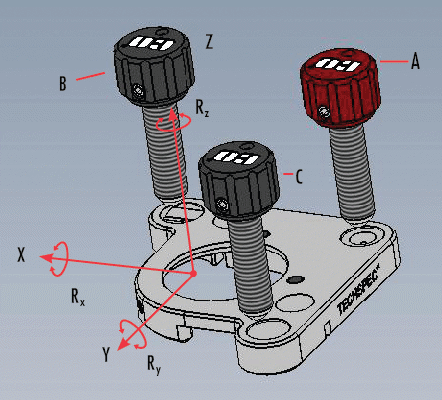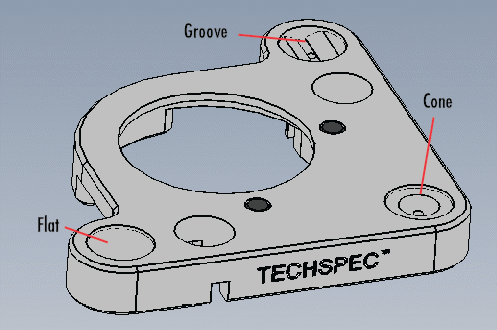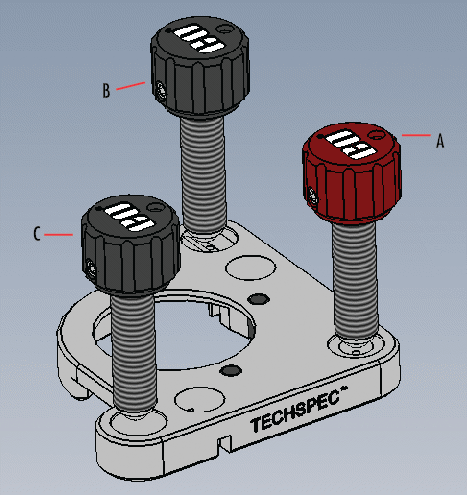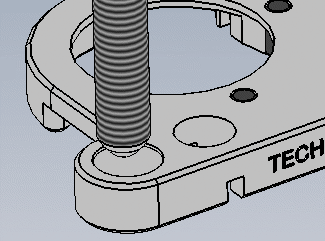深入瞭解調整架的運動
機械系統可依照現有的自由度 (DOF) 數值進行分類。三維的剛體有六個不同的自由度:分別是平移 (X, Y, Z) 和轉動 (Rx, Ry, Rz)。所有自由度完全被約束的情況,即視為符合動力學。圖1 為調整架。

圖 1:TECHSPEC® 動態鏡座設計完全限制所有6個自由度。
Edmund Optics®的TECHSPEC® 調整架使用典型圓錐、槽、平面控制體系。圖2和圖3 為1" 直徑的調整架。想像一下在有三個調節螺釘的坐標系統中調整光學元件,這是調整架的操作方式。

圖 2:槽、圓錐和平面限制系統

圖 3:三螺絲1"直徑動態光學鏡座
首先,將調節螺釘 A 的球形尖端放入圓錐約束的所有平移自由度 (X, Y, Z) 。當槽面向X軸,如圖1所示,將調節螺釘 B 的球形尖端放入槽約束僅剩的兩個轉動自由度 (Ry, Rz),(注:總共有三個)。在平面上放入調節螺釘 C 的球形尖端,最後一個自由度 (Rx) 即被約束(圖4)。

圖 4:球形尖端螺絲與平面限制Rx個自由度。
Edmund Optics® 提供配備兩或三調節螺釘型式的調整架。槽和平面上的兩調節螺釘可用於調節轉動自由度。與上述示例相反的是,在調節時,轉動軸會在光學元件背後,因此光學元件在Z軸上會出現微小的移動。
第三個螺釘可以放在圓錐上,以補償不必要的移動。此三螺釘配置可使得光學元件利用兩個調節螺釘來調節轉動,並使用第三個螺釘沿著Z軸返回原位。



























or view regional numbers
QUOTE TOOL
enter stock numbers to begin
Copyright 2023, Edmund Optics Inc., 14F., No.83, Sec. 4, Wenxin Road, Beitun District , Taichung City 406, Taiwan (R.O.C.)
Privacy Policy | Cookie Policy | Terms & Conditions | Accessibility
California Consumer Privacy Act (CCPA): Do Not Sell My Information